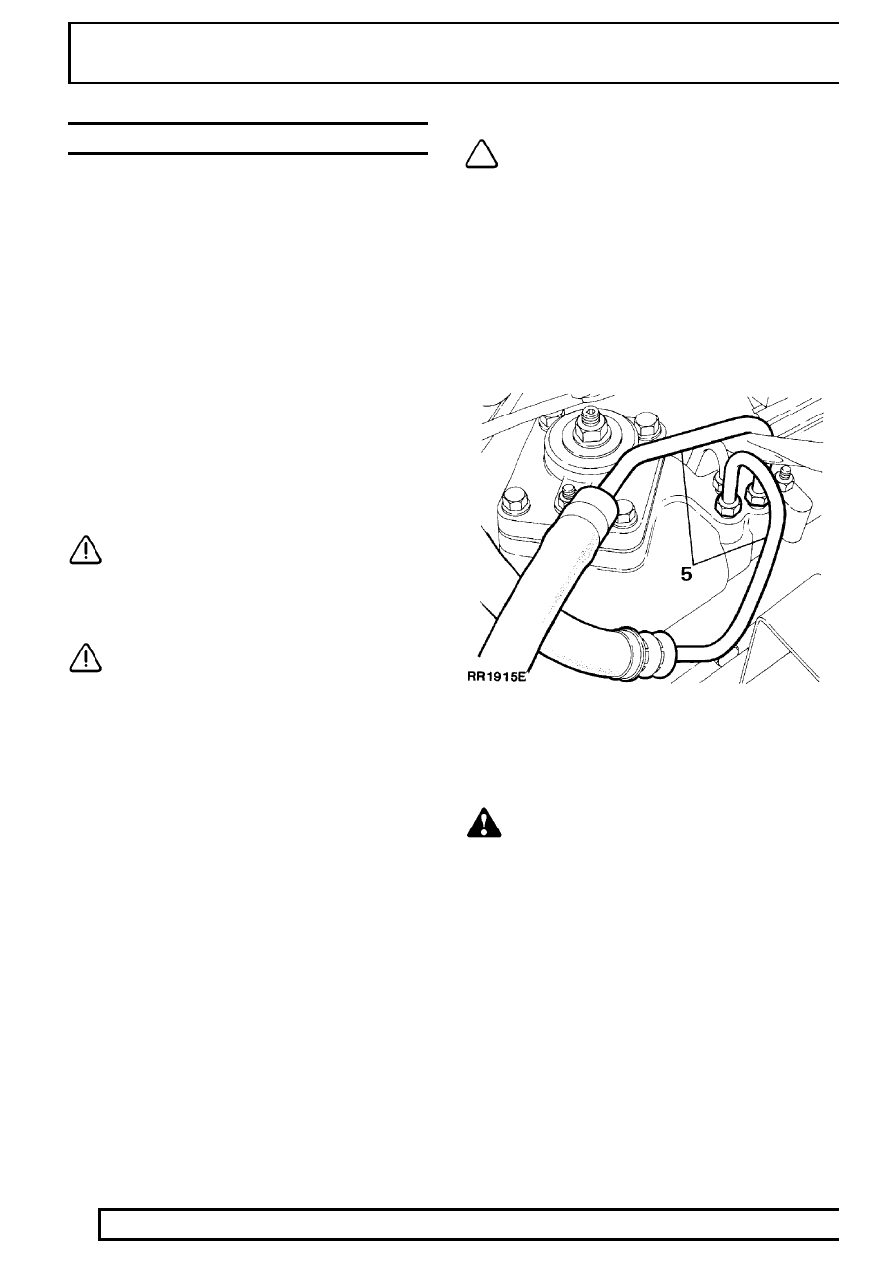Range Rover Classic. Manual - part 102

57
STEERING
2
REPAIR
POWER STEERING BOX
Service repair no - 57.10.01
General precautions
1. Whenever any part of system, is removed or
disconnected, utmost cleanliness must be
observed.
2. Disconnected ports and hoses must be plugged
to prevent ingress of dirt. If metal sediment is
found in system, establish cause rectify and
flush system.
3. Do not start engine until reservoir is full as pump
will be damaged.
4. Metric pipe fittings are used with ’O’ ring pipe
ends on fittings to steering box.
5. Follow normal ’O’ ring replacement procedure
whenever pipes are disconnected.
6. Ensure compatible metric components when
fitting replacement pipes.
CAUTION: Before removing any parts of
steering linkage, it is imperative that road
wheels are positioned straight ahead.
Then steering wheel removed to prevent rotary
coupler being wound up or damaged.
CAUTION: After refitting steering linkage
parts follow correct procedure to ensure
that road wheels, steering box and
steering wheel are correctly positioned relative to
each other when in straight ahead condition. If
steering wheel requires repositioning, ensure that
drive pegs on rotary coupler are correctly
positioned before steering wheel is replaced.
This ensures drive pegs locate in their holes in
rear of steering wheel.
After final alignment connect rotary coupler
multiplug, tighten steering wheel securing nut and
fit air bag - if fitted or steering wheel trim pad.
NOTE: When drag link is disconnected
from steering box, travel available at
steering wheel to each full lock is not
equal.
Remove
1. Site vehicle on level surface.
2. Open bonnet[hood].
3. Remove filler cap from power steering fluid
reservoir.
4. Clean steering box.
5. Disconnect feed and return pipes from steering
box.
6. Plug open pipes and steering box ports to
prevent ingress of dirt.
7. Support chassis front on axle stands. Or raise
vehicle on a hoist.
WARNING: Ensure wheels are chocked,
parking brake is applied, and low range
selected.